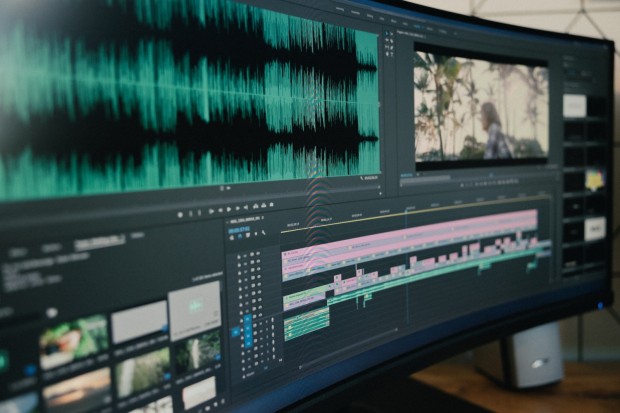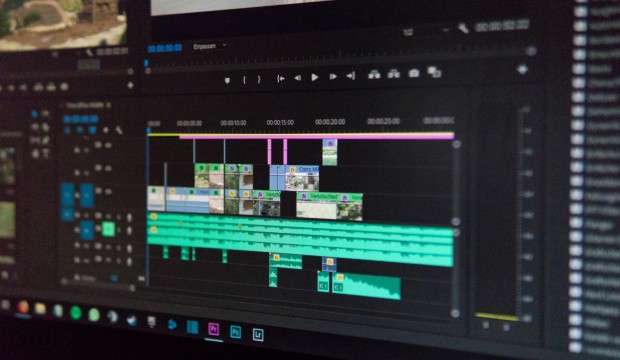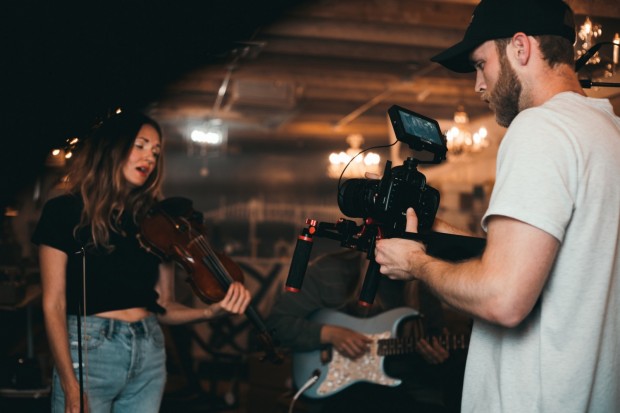
Video content is a powerful medium for creating attention-grabbing visuals, inspiring stories, and effective communication. But it's only with the right editing techniques that you can bring your video project to life.
Video editing is an indispensable part of content creation. It allows you to take existing footage and mold it into a piece that tells the story you want to convey. From basic cutting and cropping to advanced effects and animation, there are many ways to edit your videos.
Here we'll explore 11 simple steps for editing you need to perform to make your post-production process much more convenient.
1. Choose the system and video editor
Whether you plan to work on a Mac computer or use Windows, choose the system that best meets your needs. Professional video editors often opt for Mac systems, as they offer more features and stability. However, if you edit just to share content with your friends on social media, both systems work great.
An editing program frequently depends on the system and the type of video you're editing. For example, if you're using videos captured on your phone or tablet to share on social media like TikTok or Instagram, try using some user-friendly mobile tools.
If you plan to work with more advanced editing techniques and video file formats, consider downloading one of the full-featured software. Some of them are free while others require a subscription to use them so choose according to your needs.
2. Learn basic video editing techniques
Before you venture into advanced video editing skills, it's important to learn the basics. After you import videos to your editing program, start by familiarizing yourself with the timeline. Add multiple tracks, place your footage and audio files, cut and split clips, adjust audio levels, and render the final product. Knowing these standard editing tools will go a long way in creating appealing video content.

3. Create a storyboard
A storyboard helps you stay organized and plan everything in advance. It's a visual representation of the best shots, transitions, and effects you plan to use.
When drawing up a storyboard, include key elements such as the opening, middle, and end. Write down all of your ideas on a piece of paper and use it as a roadmap to follow during the editing process.
Creating storyboards is also useful if you intend to collaborate with other people on the project, as it outlines the expectations for everyone involved. Consider creating a storyboard even for short, simple projects - it will save you a lot of time and storage space on your computer.

4. Make transitions
Transitions add visual appeal and help move the story along in the video editing journey. They also make your video look more professional. You can use a variety of transitions like fade, wipe, dissolve, etc. to make smooth and natural transitions between video clips.
5. Adjust colors
Color correction is the process of adjusting the colors in your video to create a consistent look and feel. Although it requires practice to master. This technique can make a huge difference in the overall look of your video.
Almost any video editor can adjust color. You can use provided tools to correct exposure and white balance, adjust shadows and highlights, or apply specific filters to make your finished video look warmer or cooler.
6. Add music
Sounds can create powerful emotions and set the tone for your entire video. Pick a track that best reflects what you're trying to communicate and fit it into your video. You can add someone else's music or use your own. Make sure that you pay attention to the copyright rules. Otherwise, use copyright-free music from available libraries.

7. Experiment with effects
Once you've mastered the art of basic video editing, you can move on to intermediate and advanced techniques to capture the viewer's attention. Don't be afraid to try new things when you start editing. Adding visual effects to your video can turn it into a masterpiece.
Powerful video editing software will allow you to use a wide range of effects like slow-motion, time-lapse, chroma key, and many others. You can use these effects to add drama, humor, or just make the video more visually appealing.
8. Use stock footage
Using stock footage is a great way to have quality video files without having to shoot additional material. Thousands of high-grade clips are available online, and you can use them to illustrate concepts, add atmosphere, or create a unique style.
Ensure that the stock footage fits the style and story of your video. Search for the keywords that best describe what you're looking for and choose from the available options. Pay attention to the licensing rules, as they may vary from website to website.
9. Insert subtitles and captions
Subtitles and captions are useful in many ways. They can help you better convey information: explain complex topics, highlight important parts, and more. Moreover, if you add subtitles to video, you make it accessible to viewers who may be hard of hearing or unable to watch the clip with sound.

10. Take advantage of templates
Templates are great tools for creating professional-looking videos. They provide you with a foundation to build on and save time while allowing you to be creative and customize the content as desired.
There are templates for almost every occasion, from weddings to business presentations, so look for those that fit your purpose and include all the elements you need.
Some video editing software has built-in templates so you can get started quickly. Just drag and drop the chosen template to your timeline and customize it as you desire.
11. Save presets
Presets are handy when it comes to editing videos of the same type. They allow you to save your favorite settings so you can apply them to other clips quickly and easily. You can create a preset with your favorite transition, color correction settings, and effects.
Having presets also ensures consistency throughout your project as you don't need to manually adjust the settings each time you start a new project. All the changes you have already made will automatically be applied.
Wrap Up
Video editing can be an intimidating task, but with the right tools and knowledge, you can make professional-looking videos in no time. Whether you want to edit videos for your blog or you're looking to become a professional video editor, many techniques and tips can help you along the way.
Remember to experiment and practice, as video editing is an ongoing process with no right or wrong way of doing things. Get creative and have fun!
* This is a contributed article and this content does not necessarily represent the views of mobilenapps.com
more stories from How To
-
iPhone Hack: How to Check Microphone-Enabled Apps And How to Turn Off Their Access for Privacy
Explore the nuanced landscape of iPhone microphone privacy, from recent breaches to proactive user strategies.
ernest hamilton -
How to Safely Reset Your Android Phone Before Selling or Passing It On
Learn how to safely factory reset your Android phone with this comprehensive guide. Protect your privacy before selling or passing on your device. Follow this step-by-step instructions for a seamless transition.
ernest hamilton -
How to Fix iPhone Boot Loop: Unlock Your iPhone's Potential with This Step-by-Step Guide
Learn how to conquer the iPhone boot loop with this comprehensive step-by-step guide. Follow the expert instructions to restore your device's functionality and bid farewell to endless reboots
ernest hamilton -
12 Ideas to Crafting a Memorable Mother’s Day Post on Your Business’ Social Media
Discover innovative post ideas and expert tips to engage your audience and drive sales. Read now and make this Mother's Day unforgettable!
ernest hamilton -
‘Coin Master’ Guide: How to Find Chests to Get More Card Collections, XP and Coins
Learn the secrets to unlocking Coin Master chests and supercharge your gameplay! This comprehensive guide reveals expert strategies for acquiring coveted chests, maximizing rewards, and dominating the game.
ernest hamilton -
Roblox: WS10'S MM2 Codes (May 2024)
Unlock rewards with WS10'S MM2 codes for May 2024 in Roblox! Get ahead in the game with exclusive bonuses.
ernest hamilton -
Idle Office Tycoon May 2024 Codes: Get Free Diamonds & More!
Unlock free diamonds and more in Idle Office Tycoon with the May 2024 codes! Redeem them now for exclusive rewards.
ernest hamilton -
Finding GBA ROMs for Your Delta Emulator: A Handy Guide
Looking for GBA ROMs for your Delta Emulator? Check out this handy guide to find and download your favorite games hassle-free!
ernest hamilton










